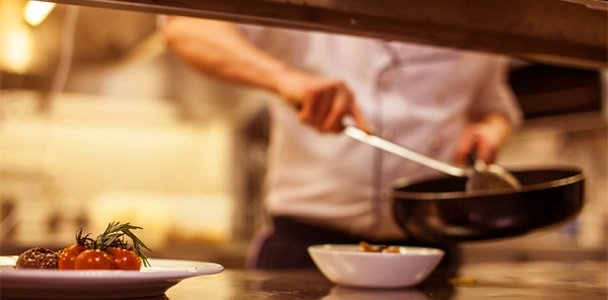Professional Chef’s who’ve been at it long enough know a thing or two about how to deal with rising food costs. Fueled by trends in global demand combined with low inventories, crops such as corn, soybean, wheat and rice can all contribute to higher prices. But it doesn’t stop there because higher crop prices creates a ripple effect that means higher prices for meat, grains, wheat, and many fruits and vegetables.
Restaurants are sometimes left with little choice but to raise prices to cover the rising cost of food however this can turn customers away. Raise prices too much and customers may visit a restaurant less often or they may dine elsewhere or worse: they may simply stay home. When times get lean it’s natural to try to spend less on food and staff in an effort to cut costs. Seasoned chefs make raising prices a last resort. First they take a fresh look at their operations to see how they can be more efficient. Wholesale prices ultimately dictate whether chefs decide to raise menu prices but consider these tips first:
Cross integration of ingredients helps keep food costs under control:
Avoid “one off” ingredients which only have use in a single menu application. Inventory management of such ingredients can be challenging. Avoiding such ingredients helps control food waste and consequently your food cost.
Consider the production method when utilizing ingredients:
Fresh herbs may be great for garniture of dishes but fresh herb purees (refrigerated or frozen) or dried herbs, both of which have a greater shelf life than fresh herbs, may work better in sauces and dressings or where a long, slow cooking process is required.
Realize that smaller can be better:
Small batch production allows you to be more responsive to changing needs, helps avoid over-production (a leading cause of food waste), minimizes the impact of production errors (better to incorrectly make one gallon of soup than 15 gallons), promotes better food safety and HAACP management (small batches cool more quickly than large batches) and can assist in maintaining quality standards.
Always have an “exit strategy” for potential over-production:
Soup of the day, quiche of the day and pizza of the day are great vehicles for making use of product that would otherwise go to waste. Don’t be afraid to be innovative and create signature dishes. Who knows? Jalapeño Popper Pizza might be the next big thing.
Know how long products really last:
To minimize waste and optimize food costs know the optimal production times, hold times and hold conditions of menu items, particularly smaller fried items such as appetizers. Their small size makes them particularly susceptible to temperature, texture and quality degradation in a relatively short period of time.
Make an educated guess about quantities required:
Determine production and par amounts based recent historical sales levels to insure that they adequately match forecast demand. Don’t simply guess as to quantities. Over or under producing can lead to unnecessary food waste which in turn leads to higher food costs.
Keep the deep-fry oil fresh:
If you make use of a deep-fat fryer to prepare breaded and battered appetizers, make sure that you change your frying oil based on the manufacturer’s recommended frequency. Alternatively, make use of “test strips” to insure that your fryer oil has not broken down and needs to be replaced. Using fryer oil which has degraded can lead to poor food quality and poor-tasting fried items, leading to higher food waste and food costs.
Don’t fire up cooking equipment before you need it:
Excessive pre-heat and standby times for steamers, broilers and fryers can lead to higher energy costs which cost you money.
Build on the basics:
Create appetizers on inexpensive platforms or carriers such as potatoes to optimize profitability and minimize food cost. Add some salsa and cheese sauce to French Fries and you have a great starter.
Consider reducing portion sizes:
This assume that you already control costs through portion control. Keep an eye out for those items that seem to come back not fully eaten and see if you can intelligently reduce some portion sizes.
Typically, a restaurant generates between 25%-35% food cost and over the past two decade food prices haven risen 2.6% on average. Although food price swings go through cycles that can last a few years, the smart restaurateurs are always looking for ways to be efficient in the kitchen.

